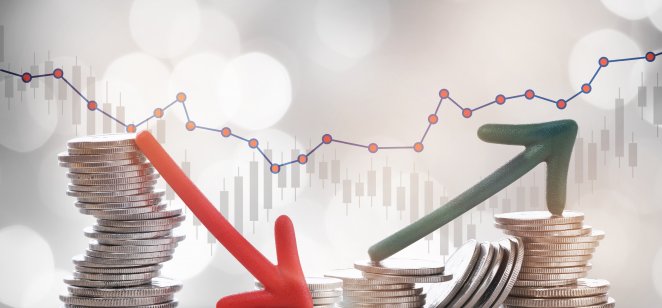
At 2pm today the Federal Reserve announced the results of its latest meeting.
The Fed is raising interest rates by 0.25%. The Federal Funds rate is now at 4.75% – 5% – the highest level since 2007.
Current projections from the Fed members suggest that rates will rise slightly – before falling in the next two years.
The “dot plot” from the FOMC members shows the following expectations:
- 5.1% rates by end of 2023
- 4.3% end of 2024
- 3.1% end of 2025
Federal Reserve Chairman Powell held a 2:30pm news conference to share comments and answer questions. The formal remarks indicate that the Fed may be nearing the end of the rate hike cycle.
Previous policy statements said that the Fed expected “ongoing increases” in interest rates. Today’s statement removed the wording of “ongoing increases.” And this was replaced with the following:
“[The FOMC] will closely monitor incoming information and assess the implications for monetary policy. The Committee anticipates that some additional policy firming may be appropriate.”
During the Q&A session, Powell acknowledged that the regional bank issues will likely have an impact on the credit markets. Smaller banks may be more hesitant to loan money to businesses and consumers. And that in itself will have a similar impact as raising interest rates.
Futures markets suggest a final 0.25% rate increase at the May meeting. And that this will be followed by rate cuts later in the year.
Stocks initially rose on the news. However, heading into the market close the major indices were posting roughly 1.5% losses.
Inside Powell’s Rate Hike Mistake
There is no doubt.
Powell faced an extremely difficult decision. Here’s why…
First, a pause in rate hikes could have been viewed as a flashing red warning sign.
Just a couple weeks ago the market was expecting a 0.5% increase. If he paused – it would be a huge reversal. The markets could have seen this as a sign that the banking crisis was worse than expected. That could have impacted stock prices – and also sparked a run on other regional banks.
Second, increasing rates by 0.25% creates additional financial stress for banks.
The big issue with Silicon Valley Bank is that the firm had purchased long-duration securities including Treasuries and Mortgage-Backed Securities. Many of these securities were purchased at rates of between 1.5% and 2.0% before the Fed began its rate hikes in March 2022.
As the Fed moved the Federal Funds rate from 0% to 4.5% – those “safe” long duration investments lost as much as 20% of their value.
As a result, every additional rate hike simply makes those losses even bigger.
Last week banks tapped the Fed’s discount window and borrowed $152.9 billion. Regional banks are borrowing money from the Fed in order to fill the gaping holes in their balance sheets.
The risk of overtightening – and raising rates too high – is very significant. After all, the Fed has a long history of overreacting. This includes keeping rates too low for too long when the economy is good. And then they raise rates far too quickly to cool off the economy during boom times.
They can’t help themselves.
Today, Powell & Co. raised rates yet again – in an attempt to squash inflation.
The official remarks highlight the Fed’s commitment to fight inflation – including:
“Inflation remains too high, and the labor market remains very tight…. Strongly committed to reducing inflation to 2%.”
History tells us that it typically takes 12-months for changes in interest rates to impact inflation. This means that the initial 0.25% rate hike in March 2022 is now finally being felt in the economy today. The impact from the rest of last year’s rate hikes won’t be felt for another year.
The Fed has already done a lot to fight inflation. The data shows that inflation IS slowing down significantly. And the trend toward lower inflation is already underway.

Powell and the other FOMC members need to focus on the regional banking issues – rather than aggressively raising interest rates to further combat inflation.
The Fed has been clueless about the risks created by aggressively raising interest rates. Remember that in early March Powell explained that the financial system remained very healthy – just days before three banks went belly up.
Hedge fund managers including Jim Chanos had been short selling Silicon Valley Bank for months.
Why? Because they looked at the bank’s financials and realized that there was a huge duration mismatch on its balance sheet.
Where was the Federal Reserve Bank of San Francisco when it came to oversight of that bank? How did the Fed and FDIC miss out on the issues that were uncovered by a few hedge fund analysts who looked into Silicon Valley’s assets and liabilities?
Pausing rate hikes today would NOT have guaranteed a reversal and pivot. However, it would have given the FOMC more time to understand and evaluate the fallout from the recent regional bank failures – and bailout of Credit Suisse.
Time will tell whether Powell made the right decision.
However, there remains continued uncertainty for regional banks and the financial system. And it would have been prudent see the fallout before raising rates once again.
 Facebook
Facebook
 Twitter
Twitter